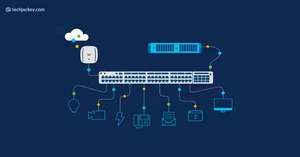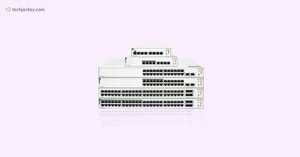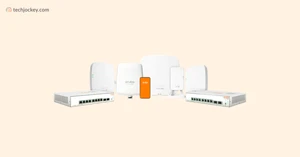Best Lan Switching Tool
(Showing 1 - 20 of 69 products)

HPE Networking Instant On Switch Series 1930
Brand: HPE Networking Instant On
(0 user reviews)
HPE Networking Instant On Switch Series 1930 is a layer 2 networking and ethernet switch developed to meet the networking, security, and PoE needs of smal... Read More About HPE Networking Instant On Switch Series 1930
₹23,980 (Starting Price)

HPE Networking Instant On Switches
Brand: HPE Networking Instant On
HPE Networking Instant On Switches is a complete Lan Switching Tool designed to serve Startups, SMBs, SMEs and Agencies. This Lan Switching Tool for Web-B... Read More About HPE Networking Instant On Switches
₹21,000

HPE Networking Instant On Switch Series 1430
Brand: HPE Networking Instant On
(0 user reviews)
HPE Networking Instant On 1430 Switch is a layer 2 gigabit ethernet switch designed to serve small businesses and home offices to manage and share their... Read More About HPE Networking Instant On Switch Series 1430
₹5,266 (Starting Price)

Arista 7050SX3 Series
Brand: Arista Networks
(0 user reviews)
Arista 7050X3 Series is a family of high-performance, fixed configuration 10/25G and 100G Ethernet switches designed for large-scale data centers.... Read More About Arista 7050SX3 Series
Price On Request

HPE Networking Instant On Switch Series 1830
Brand: HPE Networking Instant On
(0 user reviews)
HPE Networking Instant On Switch Series 1830 is designed to meet the networking and security requirements of space-constrained locations. It is an entry-l... Read More About HPE Networking Instant On Switch Series 1830
₹12,351 (Starting Price)

HPE Networking Instant On Switch Series 1960
Brand: HPE Networking Instant On
(0 user reviews)
HPE Networking Instant On Switch Series 1960 is a layer 2 and stackable gigabit switch designed to meet the networking, security, PoE needs of growing bus... Read More About HPE Networking Instant On Switch Series 1960
₹89,760 (Starting Price)

Sophos XG Firewall
Brand: Sophos
Sophos XG Firewall is an advanced LAN switching tool for enterprises, offering superior visibility into suspicious traffic, risky activities and cyber thr... Read More About Sophos XG Firewall
Price On Request

Arista 710P Series
Brand: Arista Networks
(0 user reviews)
Arista CCS-710P Series is a line of fanless, compact, Power-over-Ethernet (PoE) switches designed for space-constrained and noise-sensitive environments.... Read More About Arista 710P Series
Price On Request

Arista 720D Series
Brand: Arista Networks
(0 user reviews)
Arista 720D Series is a line of high-performance, fixed-configuration campus switches designed for the demands of the interconnected IoT-enabled campus.... Read More About Arista 720D Series
Price On Request

Arista 7010TX Series
Brand: Arista Networks
(0 user reviews)
Arista 7010X Series is a line of high-performance, power-efficient Gigabit Ethernet switches designed for data center deployments.... Read More About Arista 7010TX Series
Price On Request

Extreme Networks 5420 Series
Brand: Extreme Networks
The Extreme Networks 5420 Series LAN Switching Tool offers robust & scalable network switching solutions, ensuring seamless connectivity & performa... Read More About Extreme Networks 5420 Series
Price On Request

Extreme Networks X435 Series
Brand: Extreme Networks
(0 user reviews)
Edge switches designed for distributed enterprises, small sites, and branches.... Read More About Extreme Networks X435 Series
Price On Request

Price On Request

Price On Request

Extreme Networks 5320 Series
Brand: Extreme Networks
(0 user reviews)
A collection of edge switches to offer enterprises an end-to-end secure network.... Read More About Extreme Networks 5320 Series
Price On Request

Price On Request

Extreme Networks 5520 Series
Brand: Extreme Networks
(0 user reviews)
The Extreme Networks 5520 Series is a versatile LAN switching solution optimized for enterprise environments, offering high-density, & resilient connec... Read More About Extreme Networks 5520 Series
Price On Request

Extreme Networks 5720 Series
Brand: Extreme Networks
(0 user reviews)
The Extreme Networks 5720 Series LAN Switching Tool delivers unparalleled network performance and scalability, making it an essential choice for robust and... Read More About Extreme Networks 5720 Series
Price On Request

Price On Request
Last Updated on : 22 Dec, 2025
Lan Switching Tool Comparison














